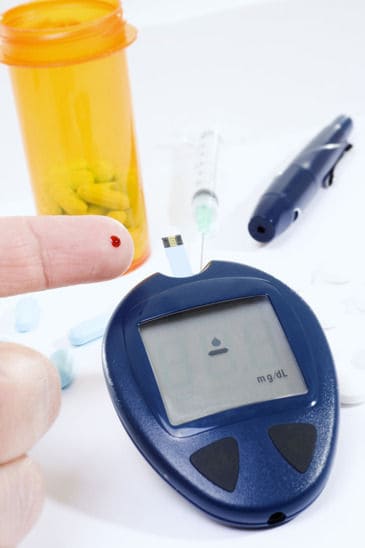

Submitted By P.B., LMT
I was working with a client who was diabetic. He is a medical doctor with a subcutaneous insulin pump. The massage had gone well; I was finishing the session by working around the neck and head. He had been quiet throughout the massage, very little conversation. I gradually became aware that he was sweating. It had started slowly, so I didn’t really pay close enough attention until I realized my hands were swimming around his neck! That’s when I realized I had a pretty severe crisis on my table. I was able to get him to come around by giving him some candy. It took over an hour for him to stabilize and be safe enough to drive home.
If you were confronted with the same situation again, how might you handle things differently?
Response from P.B., LMT
I am now more aware of the signs to look for when dealing with a diabetic client. I also realized that simply because he was a medical doctor and experienced with dealing with his diabetes did not mean that a crisis couldn’t occur. I have also done more self-educating to look for other symptoms (e.g. stroke or blood pressure imbalance) that can occur while working with a client. I was trained to look for these types of events, but it was another thing entirely to have it happen on my table!
Response from Institute for Integrative Healthcare Studies
So often, as massage therapists, we may get a bit lax in our awareness simply because most of our clients may have no major pathologies. They just want a relaxing massage or some relief from the aches and pains of daily life. If they are ill or have a chronic ailment, it may not be serious enough to warrant any major precautions or may be under control enough to not be of great concern.
Unless a thorough intake is done with a new client and a periodic review done with long term clients, those with underlying medical conditions may slip through the cracks. Just asking, “How are you doing today?” and getting an “Okay, great,” from the client is not enough.
It is so important to be current not only on precautions and contraindications, but also to keep awareness in present time with regard to how a client is reacting or responding to the massage session. With a long term client you will get to know if what is happening might be a crisis situation. You should know what to do about it, when to intervene or not, when to stop a session – and when to call 911.
As the above example shows, even a medical professional can have a health crisis during something as seemingly benign as a routine massage. Both the client and massage therapist need to be aware that massage can have a strong effect on various body systems, even more so if there is an underlying pathology whether known or unknown.
To keep up your skills, you may want to take a basic first aid course, often offered at low cost through your local American Red Cross office.












Great example of why awareness of a client’s history is so important! Thanks for sharing P.B.
I always keep small cans of juice or packets of honey in my office – suggested by a diabetic client whose sugar went very low during a massage – she sounded drunk when trying to talk and we both fortunately realized what was happening.. We also now do less physical massage – more cranio-sacral and reiki for her sessions. No problems since.
thank you PB and Avo for the heads up and tips and see I need a refresher on what to look for as you say subtle changes can be missed
Sometimes when blood sugar is low they may get bad enough to not be able to safely swallow liquids or have candy in their mouth. Keep a tube of cake decoration frosting in your room. You can slip that under a lip, not down a throat, while dialing 911.
Before the session, I always ask when they’ve eaten. How “sugars” have been when clients are insulin dependent. I’ve become fairly adapt at even noticing when they’re past due for a meal or levels are in have been haywire with one client as our lives regularly intersect. I learned something here though, the what if he/she is unable to eat the candy or glucose tablet. I shall find out now from each one, what they would prefer I do in case of emergency.
Also, consider that for diabetics, although sugars usually drop during massage, there is the remote possibility that sugar is high rather than low due to outside factors. Keep in mind that giving someone sugar would not be the correct thing to do in these cases.
good suggestions, on sharing our experiences. will do that some day. i have an odd case once.